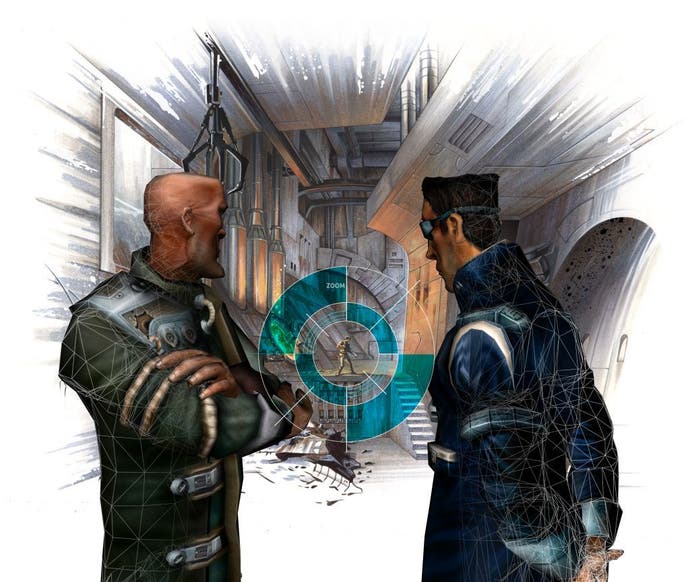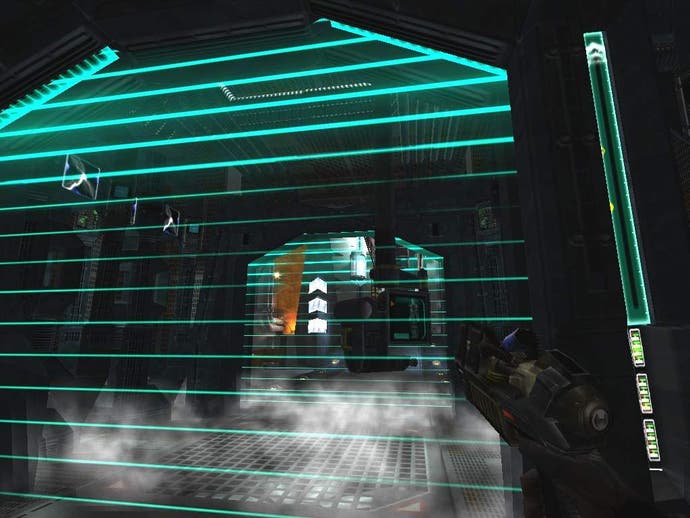Ingo Horn and Christoph Kabelitz of Westka Interactive
Interview - we chat with the German developers behind The Y-Project
Yesterday we gave you your first exclusive peek at a new Unreal-engined action-adventure game called The Y-Project which is under construction at German developer Westka Interactive. Today we chat with co-founder Christoph Kabelitz and head of marketing Ingo Horn to find out more about the company's background and the technology behind the game.

Famous Five
Westka has been around since 1993, when it was formed by Christoph and two other developers to produce promotional games, mostly little point-and-click adventures. Eventually they worked their way up to producing kids' entertainment software, including a range of games based on Enid Blyton's classic Famous Five stories. "1998 was a very important year for Westka, because it saw the release of the first real core game - Arcatera - which was released by UbiSoft [and] was quite a huge project for Westka at that time", according to Ingo. Sadly the game was marred by a rather clumsy interface, which was accompanied by diabolical voice acting and dialogue by the time the game reached the UK market thanks to some lousy translating. Still, the company continued to make a living from developing more casual games, and in 2000 received a large investment from production company Brainpool TV, "the biggest in Germany making comedy shows, quiz shows, soap operas and so on", according to Ingo. The company has now grown to employ over sixty staff, about half of whom are working on The Y-Project at the moment. "I think we were lucky to convince some quite experienced people to join us", Christoph told us. "Like Ingo [a veteran of Virgin Interactive, Infogrames and German gaming magazine Power Play] and also our project manager Thomas Schaefer, who was former head of third party publishing at CDV. We have also several guys from Blue Byte, who did the Settlers series, Battle Isle and Incubation, from the art director of Blue Byte to some of the programmers. We also have people, for example, from UbiSoft Romania, who worked on Rayman and POD."

Pooling Resources
Along with funding, Brainpool have provided Westka with new resources and expertise. Ingo explained that "we get access to big German TV licenses and technical equipment like blue screen and all this stuff, as well as some key positions like staff writers or stage directors, which are not only used in TV shows and movies but which we could also use for our game". "The Y-Project features a strong storyline which is always driven by in-game cinematic cutscenes. We tried to make use of BrainPool know-how from stage directors who tried to give these sequences a really cinematic look. The whole world is also designed by an architect to give a really credible and believable look and make everything fit together." Westka are also taking full advantage of their motion capture studio for character animations, "except for the insects of course". As Ingo pointed out, "you couldn't place them in a motion capture, so all of the animations had to be [done by hand]". Something which proved to be a herculean task given the wide variety of monster types included in the game. "We had sixteen different monsters with two legs, four legs, flying... It was much work to do, but finally we make it."

Getting Unreal
All of this is rendered in-game by the latest version of the Unreal engine, which Westka have licensed from Epic. So what has it been like working with this technology? "Great, great. Really good!" Chris enthused. "The results are really, really good. There's an excellent particle system, we can use very many polygons to create a lot of detail, the material system is great, also the per-pixel lighting for dynamic lighting and projected shadows. I think it was a really, really good decision. Of course it takes time to get used to it, as it is quite complex and you have to learn how to work with it. But we had a quite long pre-production phase of about 12 months so far, and I think we'll need another 12 or 14 months to produce [the game]. But I think now we are really ready to go forward and do it." It's not just the technology which has got Westka excited either. "What's really excellent is that Epic is very good in supporting [the engine], and the access to the community. There's an Unreal developer network where the people from Legend who do Unreal 2 are, or Warren Spector with Deus Ex, and also UbiSoft. So you can talk to them, share code and tools and things like this. And this is also where you go to share your thoughts and talk about gameplay as well as production and coding."

Engine Enhancements
Westka have also added a few touches of their own to enhance the engine for Y-Project. Given the game's reliance on in-game cinematics, it's no great surprise to learn that these improvements include "lip synch, with special software to synchronise the mouth and facial animations to the speech". "We will also enhance the AI. For example, the insects have quite different characteristics - we will have ones that can climb on the walls or creep on the ceiling and so on, other ones that can fly around and take you from the air. Which means that we had to enhance the typical 2D pathfinding to a 3D AI. We also allow them to have easy communication, so they can cry for help or they hear others dying. They may also use group tactics, like attacking you all together from the air, and they will have quite different technical characteristics, like they may have ranged weapons, and we have things that can [merge] together and roll towards you and try to bump you, and we have guys that commit suicide and shoot around all their stings." "And we will use the Karma physics engine, a special implementation of the MathsEngine into the Unreal engine, to add realistic physics", Chris added. All of which will be used for actual gameplay as well as creating a more believable world, as Ingo explained. "We can add physics to water for gameplay, so if you need to flood something it's easily done by the physics so that the water rises up. And if you are on the science side you must solve puzzles, ordering containers or moving them in the right direction because they're blocking something, or moving debris."
Conclusion
It's a long way from Enid Blyton to Unreal-engined sci-fi shooters, but judging from what we have seen so far The Y-Project could well prove to be a breakthrough game for Westka. With a staff of industry veterans from Germany and Central Europe and support from one of Germany's biggest TV companies, they may be on to a winner.
-







